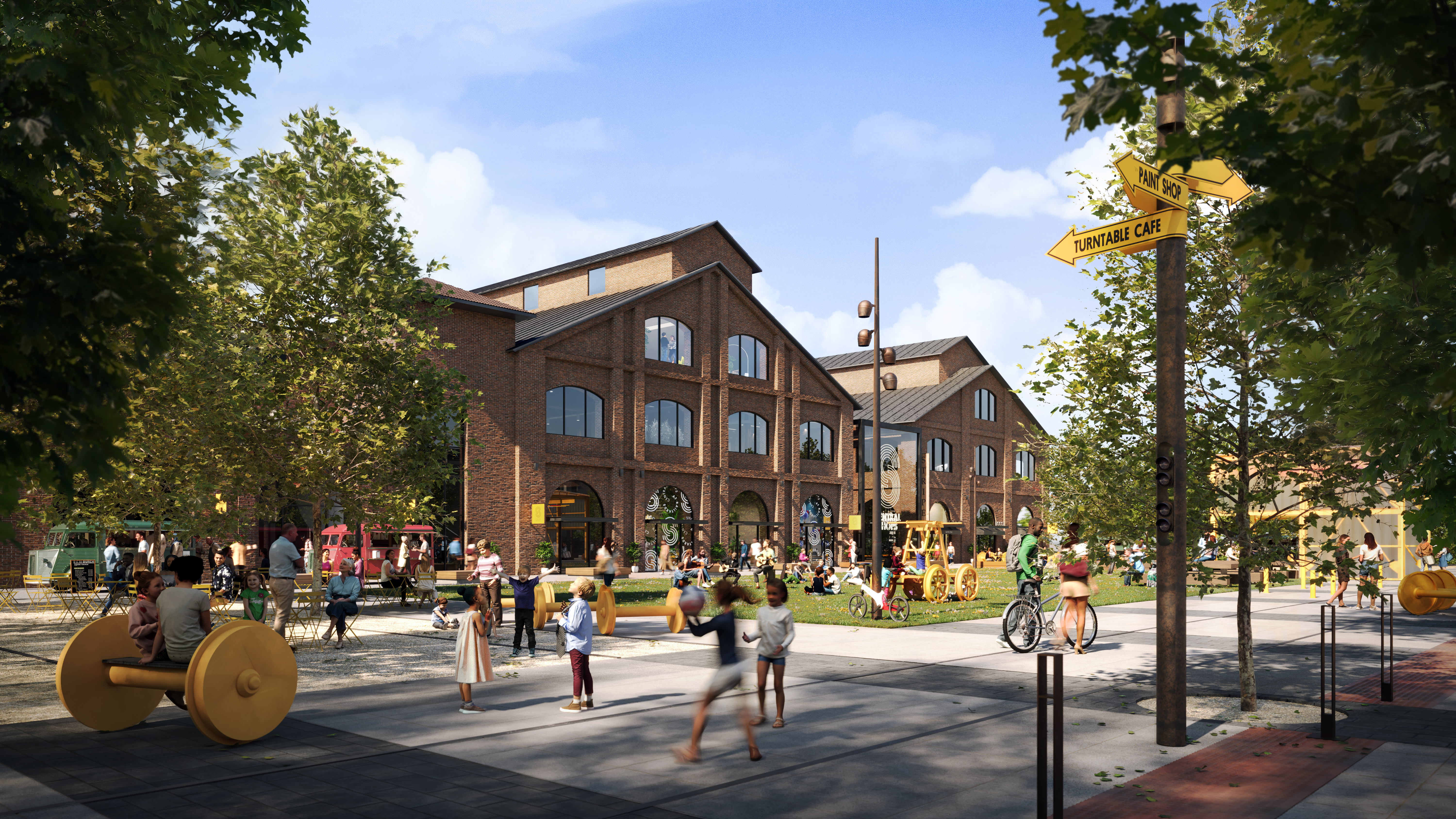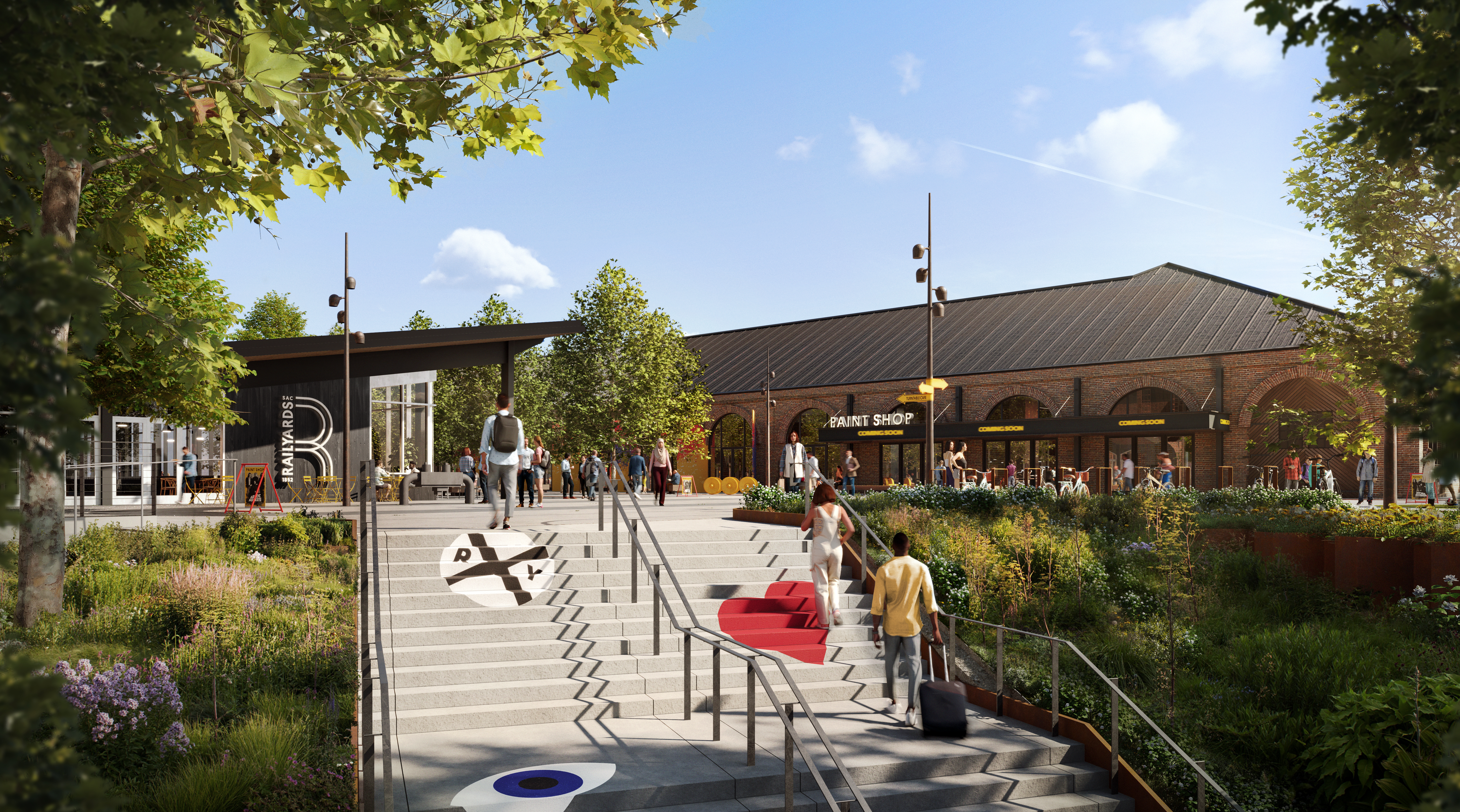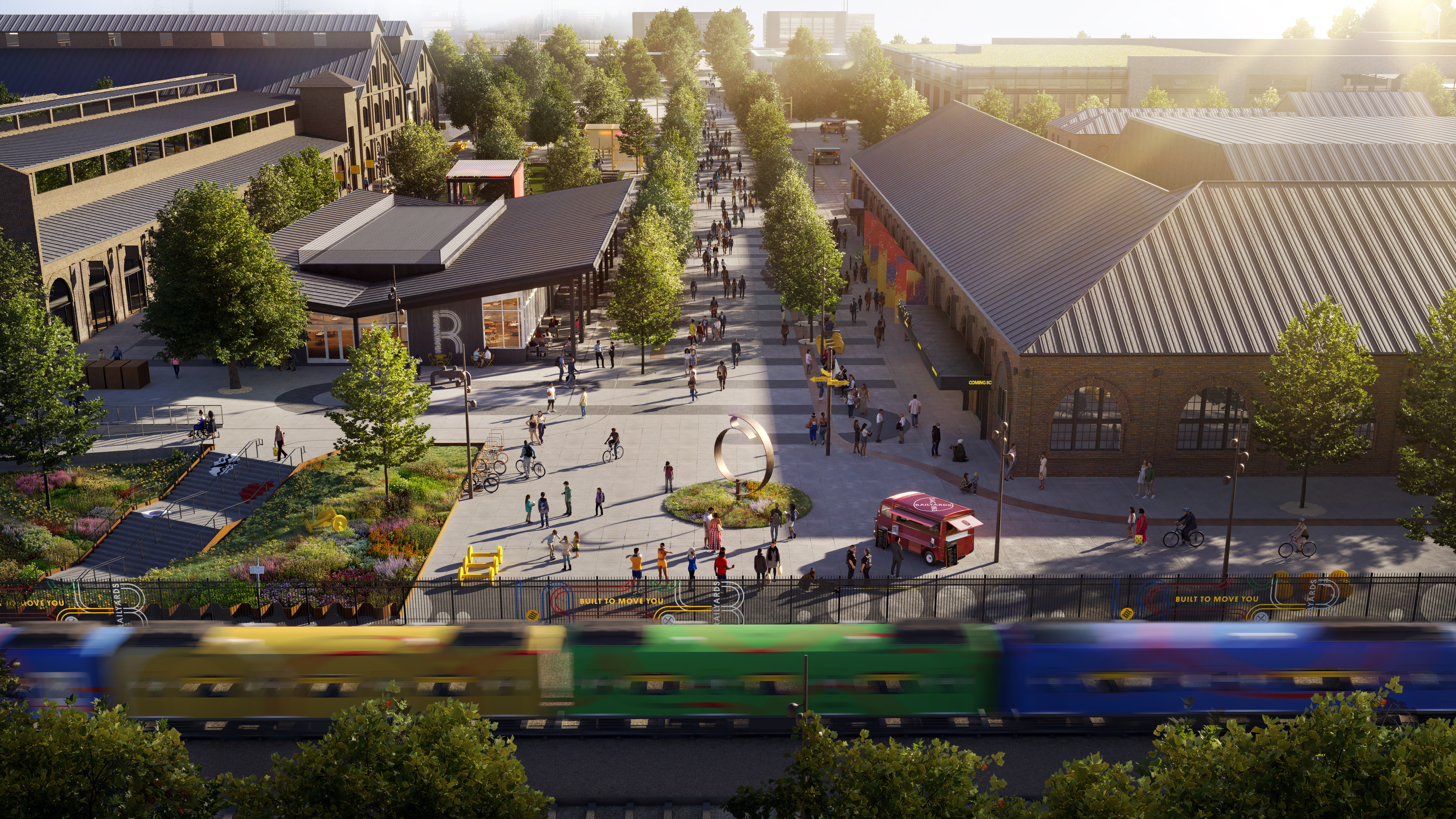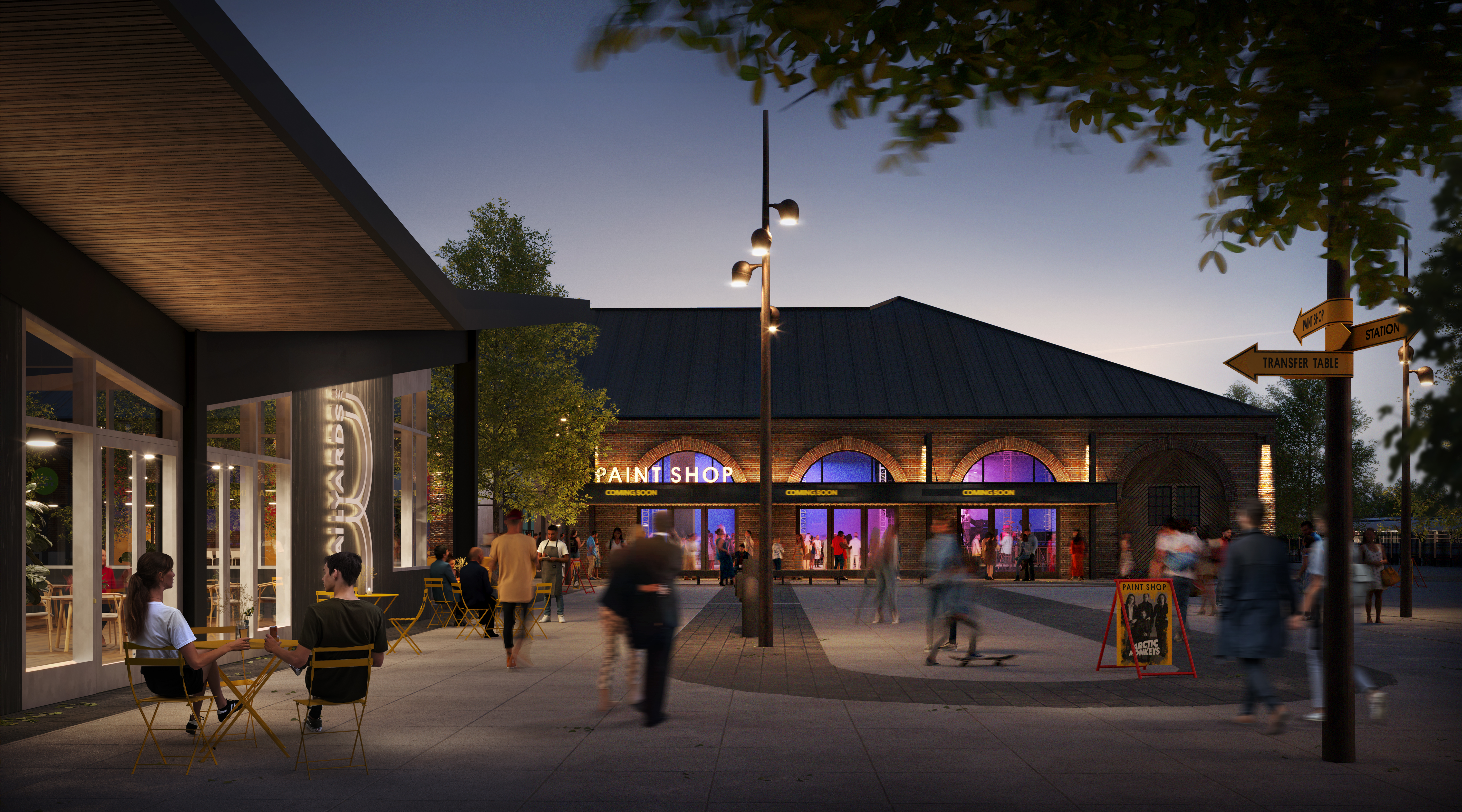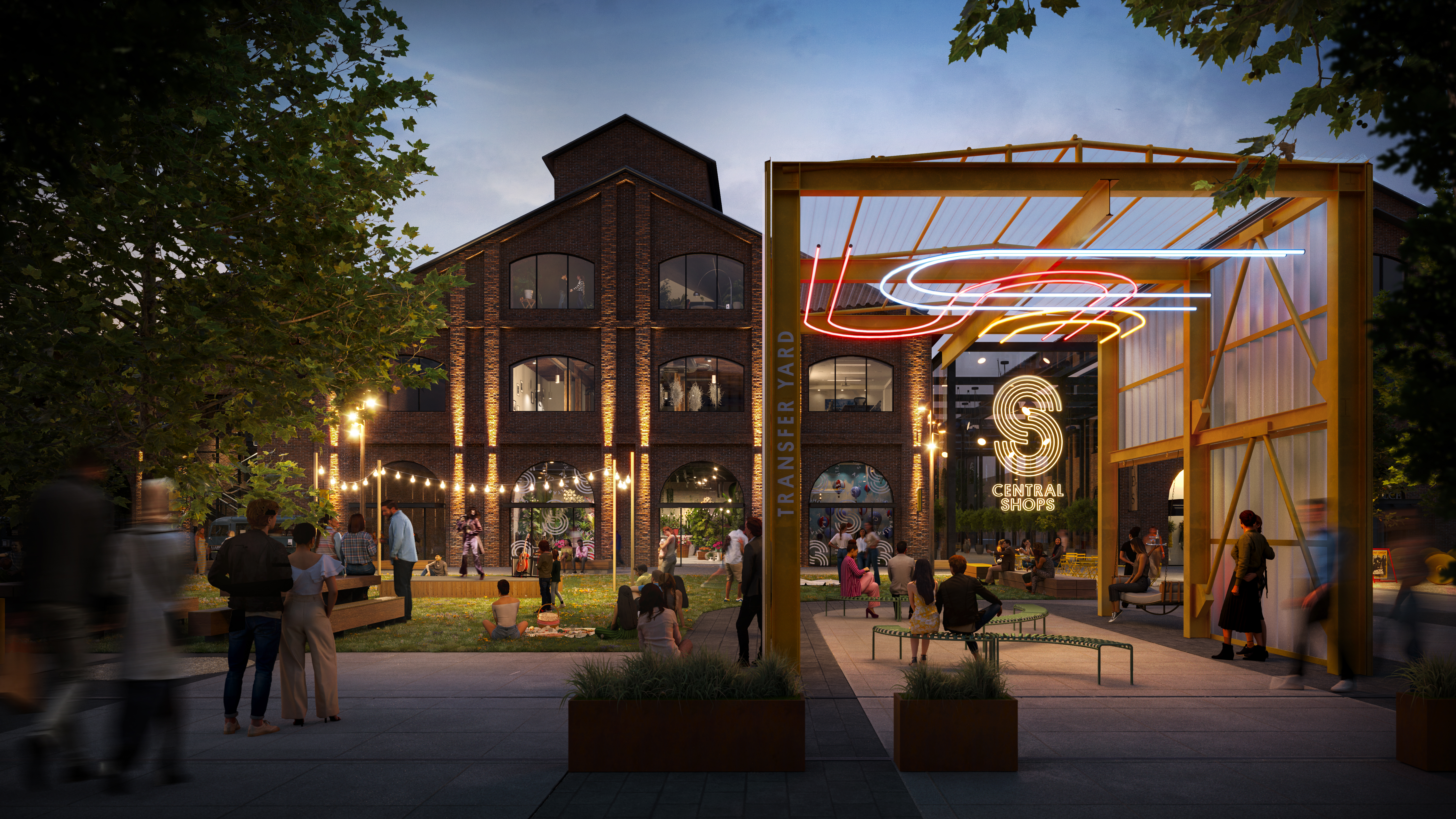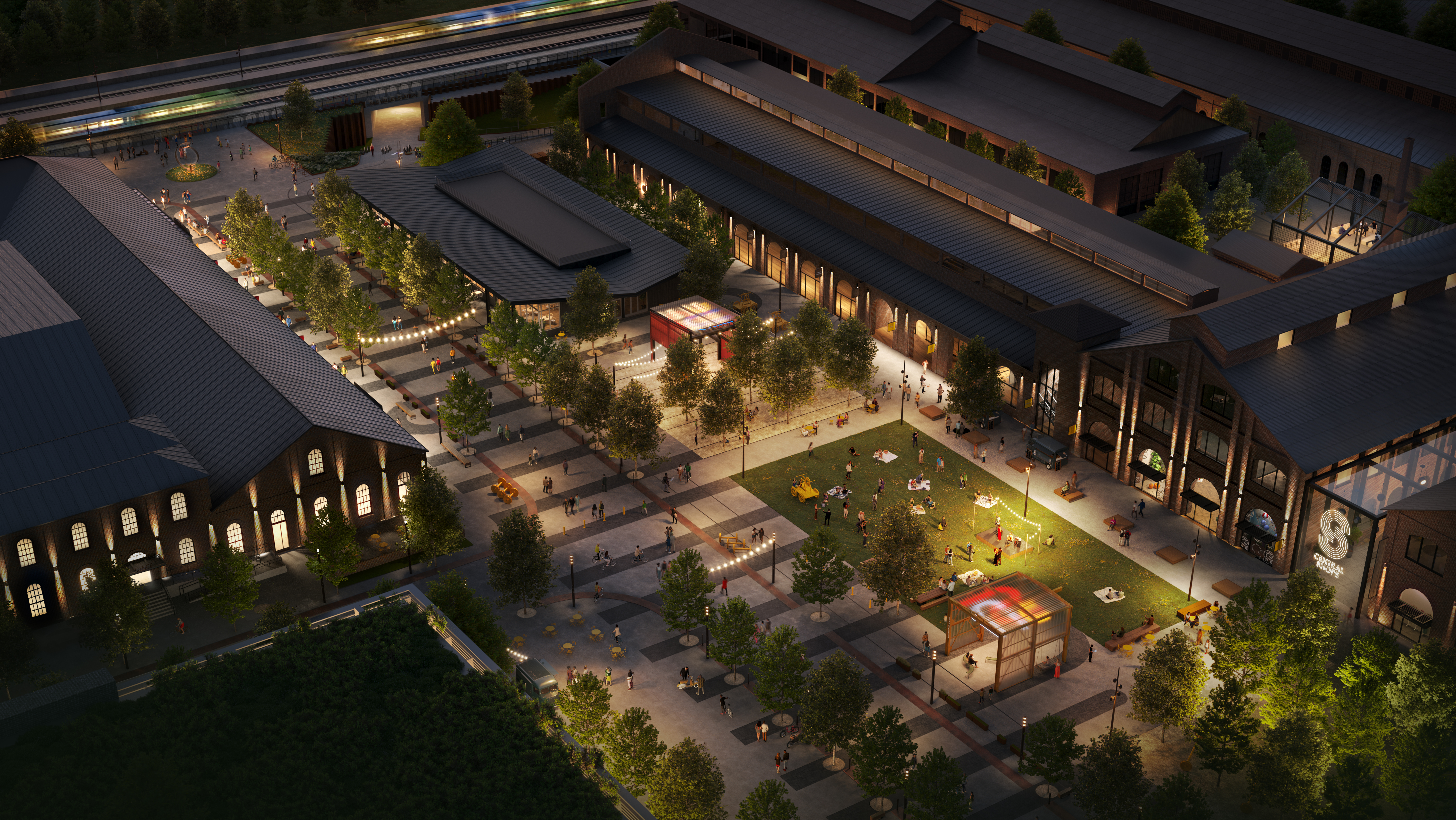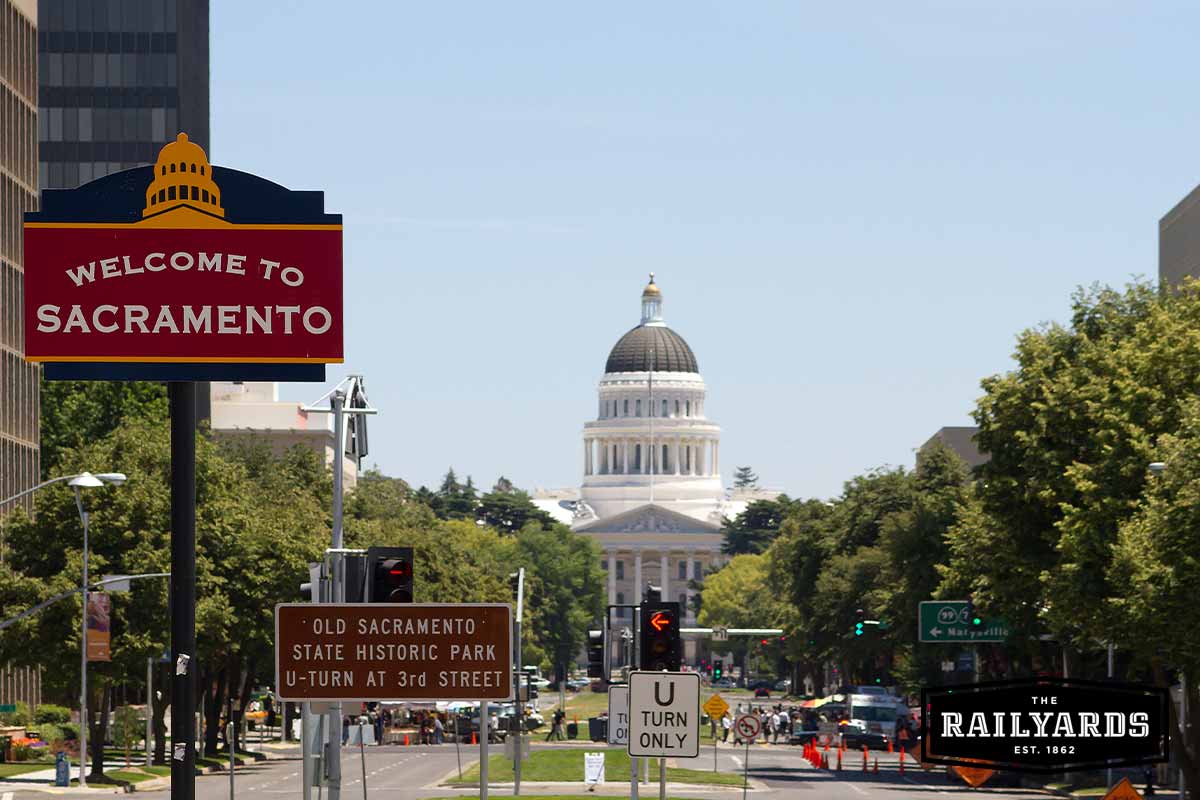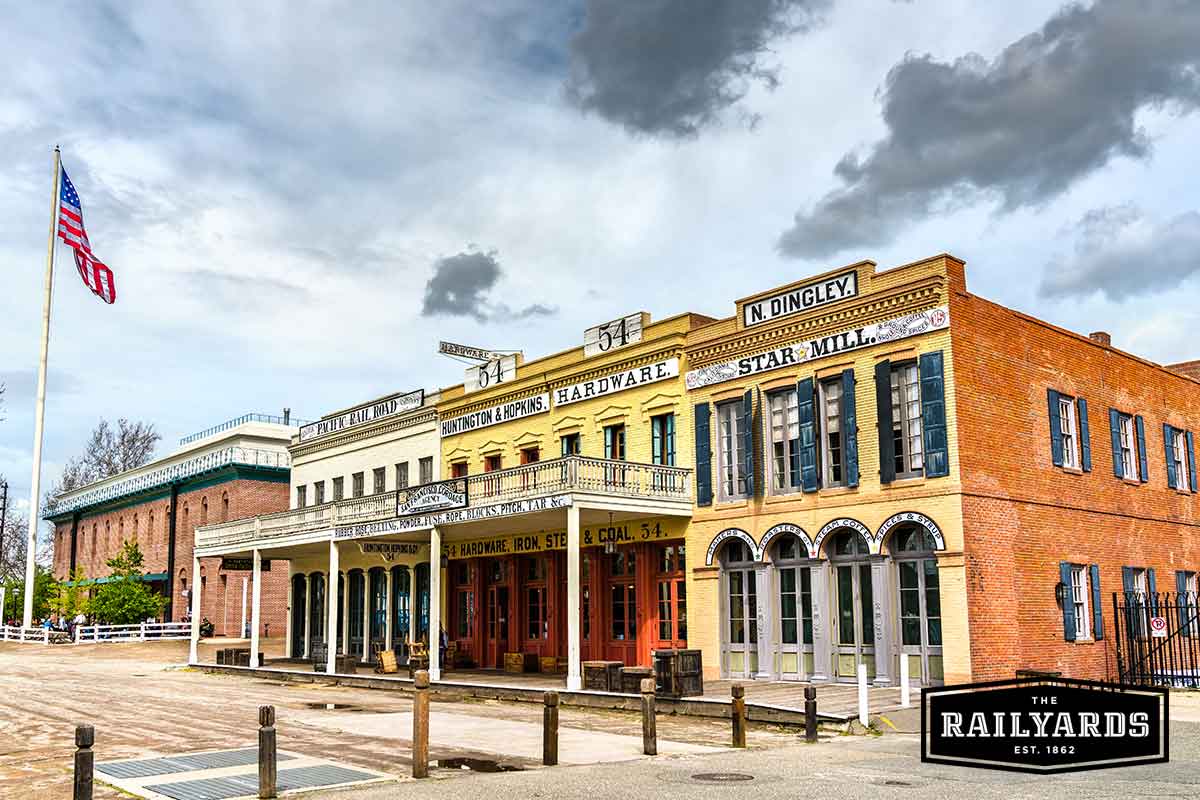
July 22, 2023 / Author: the Railyards
Unearth Sacramento's storied past! Discover 15 historic landmarks, including hidden tunnels, iconic bridges, and more, from the Gold Rush to the modern era.
Between passing light rail trains and bustling traffic, a keen eye will unearth monuments to Sacramento’s past across the city. Discover 15 historic landmarks that tell the story of Sacramento, from the days of the Gold Rush and the Pony Express through the 1940s and into our modern era.
15 Historic Landmarks to Explore in Sacramento
Old Sacramento Underground
Explore the hidden secrets of Sacramento’s past as you venture beneath the streets of Old Sacramento. Did you know that the streets of California’s capital used to be 10 feet lower than they currently stand? The street levels were raised to provide residents relief from dangerous flooding, but you can still see the original foundation of Sactown with a Sacramento History Museum tour of the city’s buried walkways.
The Lady Adams Building
The Lady Adams Building, known to today’s Sacramentans as the home to beloved costume shop Evangeline’s, is one of the oldest surviving structures in Sacramento. The hardy brick building withstood historic events such as the fire of 1852, the flooding of 1860 and ‘61, and other calamities. Like the rest of Old Sacramento, it was raised to its present level in 1865.
Eagle Theater
Immerse yourself in the rich theatrical heritage of Sacramento by visiting the Eagle Theater. The theater Old Sacramento visitors enjoy today is a recreation of the original, standing as a testament to California’s entertainment history. In 1849, construction began on what would become the Golden State’s first permanent theater. The building was destroyed in the floods that plagued historic Sacramento and would be rebuilt over 100 years later.
Big Four Building
Step into the past at the Big Four Building, a treasure trove of Sacramento’s commercial and railroad history. This Big Four Building in Old Sacramento was the historic home to the Huntington, Hopkins & Company Hardware Stores; the Stanford Brothers Warehouse; and the Nathaniel Dingley Steam Coffee & Spice Mill. The historic structure showcases the pivotal role of railroads in shaping Sacramento’s development and the city’s commercial heritage.
Pony Express Terminal
The Pony Express Terminal, also known as the B.F. Hastings Bank Building, served as the western terminus of the legendary Pony Express in 1860 and 1861. Walk in the footsteps of daring riders and relive the excitement and adventure of this iconic mail delivery service.
Tower Bridge
Sacramento’s iconic bridge first opened in 1935, becoming the first vertical lift bridge in the California highway system. The historic bridge was originally aluminum silver and was repainted its iconic gold in 2002 after a public vote to pick the new color. Enjoy a stroll across this architectural marvel and take in the breathtaking views of the city and the mighty Sacramento River.
California State Capitol
Marvel at the architectural splendor of the California State Capitol, a historic building that dates back to 1869. Visitors can bask in the serene beauty of the World Peace Rose Garden and reflect at the memorials and monuments that dot Capitol Park.
Sutter’s Fort
Step into the Gold Rush era with a visit to Sutter’s Fort. This historic landmark preserves California’s history and tells the story of many of the cultures that called this area home during the 1840s, such as Mexican citizens of Alta California, Native Americans, and European and American pioneers.
The Sacramento Valley Station
The historic Sacramento Valley Station, which opened its doors in 1926, is a testament to Sacramento’s long history with the railroad. Marvel at architectural details like the striking, locally-produced brick and terra cotta trim, or grab tickets for the California Zephyr or the Coast Starlight with Amtrak. Where will the Sacramento Valley Station take you?
Gunther’s Ice Cream
Gunther’s Ice Cream has been serving scoops in Sacramento for more than 80 years. Enjoy classic, nostalgic flavors in a shop that still looks much as it did in the ‘40s. Savor a sweet treat beneath the iconic neon sign that has graced the roof of the establishment for 70 years. The sign, Jugglin’ Joe, was designed by Herman “Pop” Gunther in 1949.
Old City Cemetery
Wander through the grounds of the Old City Cemetery, a 30-acre outdoor museum steeped in history. Explore the historic gravesites and statues that bear witness to the stories of Sacramento’s past. Join a guided tour to delve deeper into the lives and legacies of the city’s early residents.
Leland Stanford’s House
Originally built between 1856 and ‘57, this mansion was inhabited by Leland and the rest of the Stanford family until about 1900. The family then donated the estate to the Roman Catholic Diocese of Sacramento to use as a children’s home until it closed in 1978. It is now California Historical Landmark #614 and is open to the public for tours of its entire property and gardens. A tactile model of the house is also available in the visitor center.
Folsom Powerhouse
As one of the first examples of significant electrical power being generated and economically shipped to local regions, the Folsom Powerhouse holds both a lot of historical and literal power behind its walls (at least it used to). Though the power station closed down in 1952, PG&E, which purchased the plant in 1902, donated it to California, where it became California Historical Landmark #633. Today, you can visit the building and view the larger-than-life generators and alternators that were used to power Sacramento and beyond.
Locke Historic District
The Locke Historic District was built in 1915 by Chinese immigrants after a fire destroyed the Chinese community in Walnut Grove. Afterward, several Chinese businessmen got a verbal lease to develop land a mile north. Because California’s Alien Land Law of 1913 prevented non-US citizens (aliens) from owning land, the lease provided ownership of any buildings but not of the land itself, which remained with George Locke and his family. Locke is the last of the Sacramento River Chinatowns to be built, and it was designated a National Historic Landmark in 1990.
Crocker Residence and Gallery
In addition to being the oldest state art gallery west of the Rocky Mountains, the Crocker Art Gallery is also home to over 1,000 original ‘old masters’ and over 700 oil paintings purchased at or before 1870. In 1885, the Crocker family donated the gallery to Sacramento, which became California Historical Landmark #599. Today, you can roam its halls, viewing works of art dating back centuries or even just a couple of years.
Are you interested in diving deeper into California’s history and culture? Plan a day at one of our region’s many engaging museums to learn more about medical history, the railroad, science, and more! Discover your guide to Sacramento’s museums.

